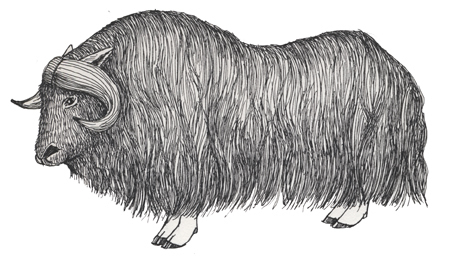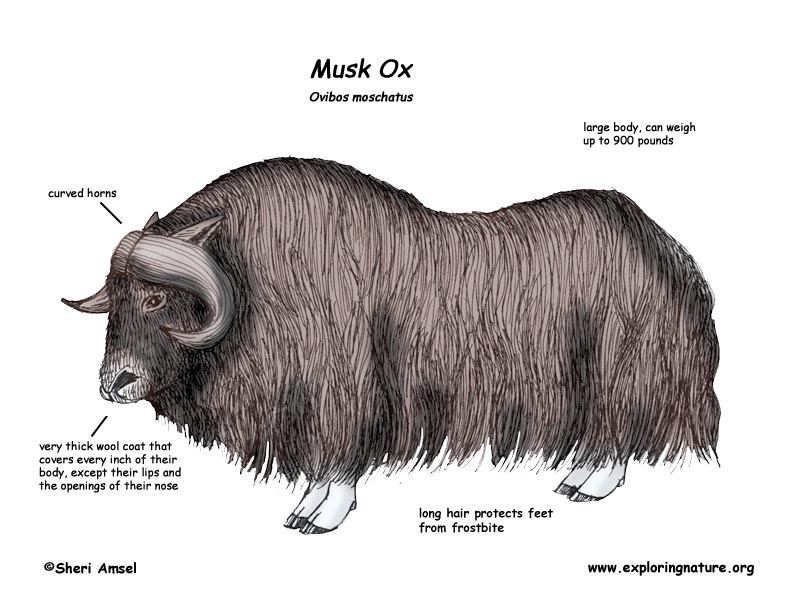

They are found in Alaska, the Yukon, across northern Canada and onto Greenland.
They live on the northern tundra. They winter on high ground where wind blows the snow off and they can get to the plants underneath. In the summer, they move to lower valleys where they can browse on willows.
They have a very thick wool coat that covers every inch of their body, except their lips and the openings of their nose. They even have hair protecting their feet. This allows them to survive in -40° temperatures. They have curved horns. Males can weigh up to 900 pounds.
They move slowly to save energy and take turns breaking trails in the snow. They huddle together at night to share body heat. They use their powerful chins to pound through crusty snow to reach plants below.
They eat shrubs, grass and plants.
The arctic wolf may prey on musk ox calves.
Male musk ox, called bulls, will compete for females in late summer. This is called the rut. Males charge each other head to head and then swing their huge heads from side to side. They even sometimes will stab (gore) another male with their horns. The strongest becomes the leader of the group of females and will get to breed. Females are pregnant for 8-9 months (gestation) and have 1 calf. They may not have a calf every year if there isn't a lot of food. Babies are born with very thick, warm coats.
That can live for up to 25 years. They are listed as Lower Risk - least concern.
Kingdom: Animalia
Phylum: Chordata
Subphylum: Vertebrata
Class: Mammalia
Order: Artiodactyla
Family: Bovidae
Subfamily: Caprinae
Genus: Ovibos
Species: Ovibos moschatus
When you research information you must cite the reference. Citing for websites is different from citing from books, magazines and periodicals. The style of citing shown here is from the MLA Style Citations (Modern Language Association).
When citing a WEBSITE the general format is as follows.
Author Last Name, First Name(s). "Title: Subtitle of Part of Web Page, if appropriate." Title: Subtitle: Section of Page if appropriate. Sponsoring/Publishing Agency, If Given. Additional significant descriptive information. Date of Electronic Publication or other Date, such as Last Updated. Day Month Year of access < URL >.
Amsel, Sheri. "Musk Ox" Exploring Nature Educational Resource ©2005-2024. December 13, 2024
< http://www.exploringnature.org/db/view/412 >

